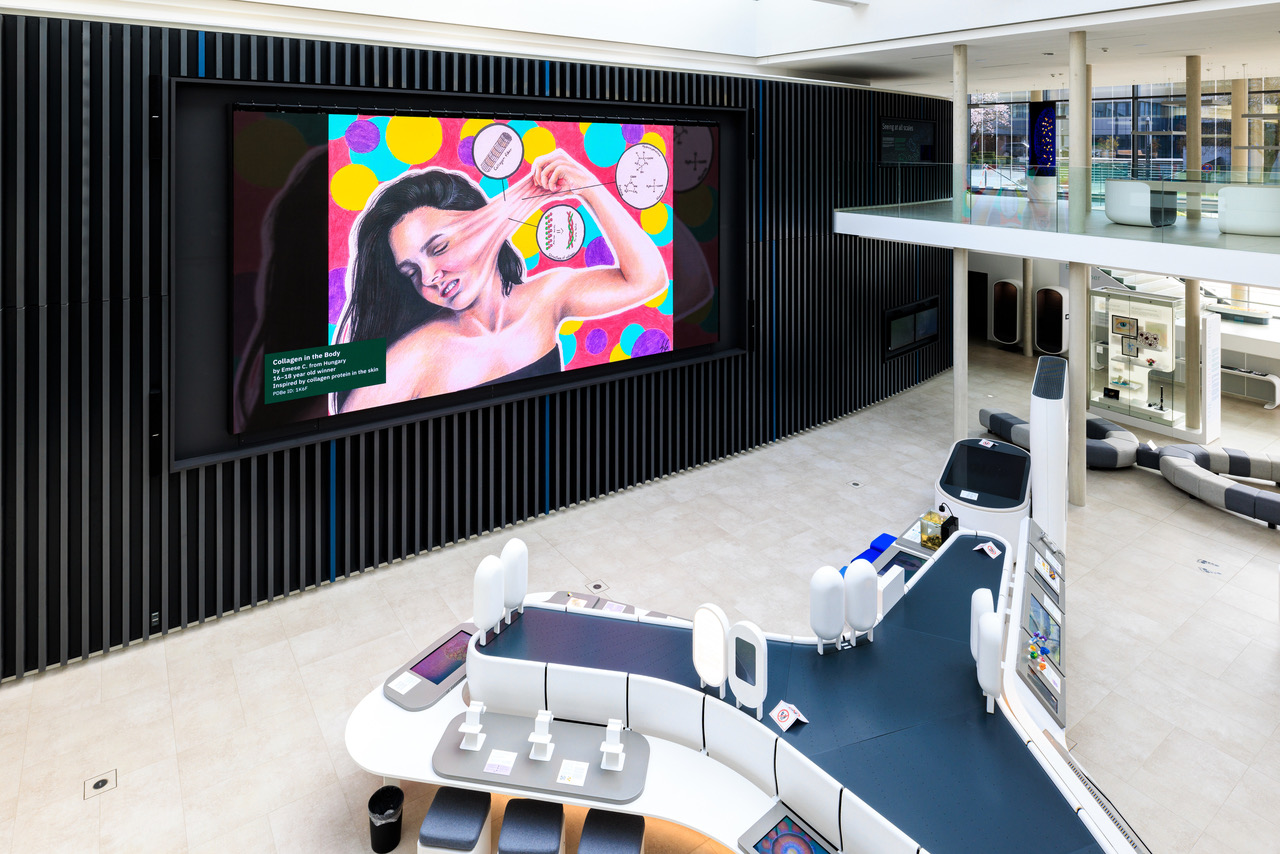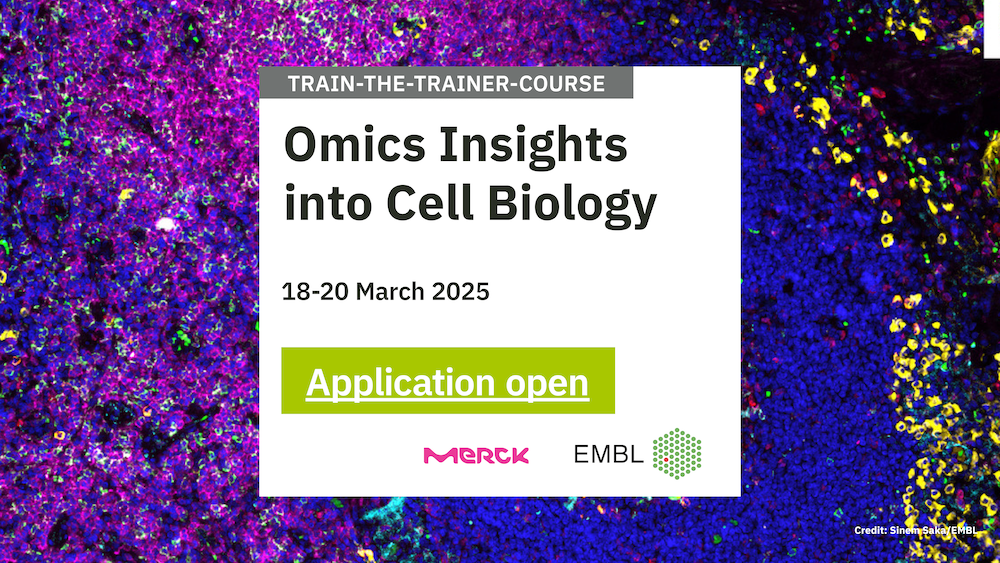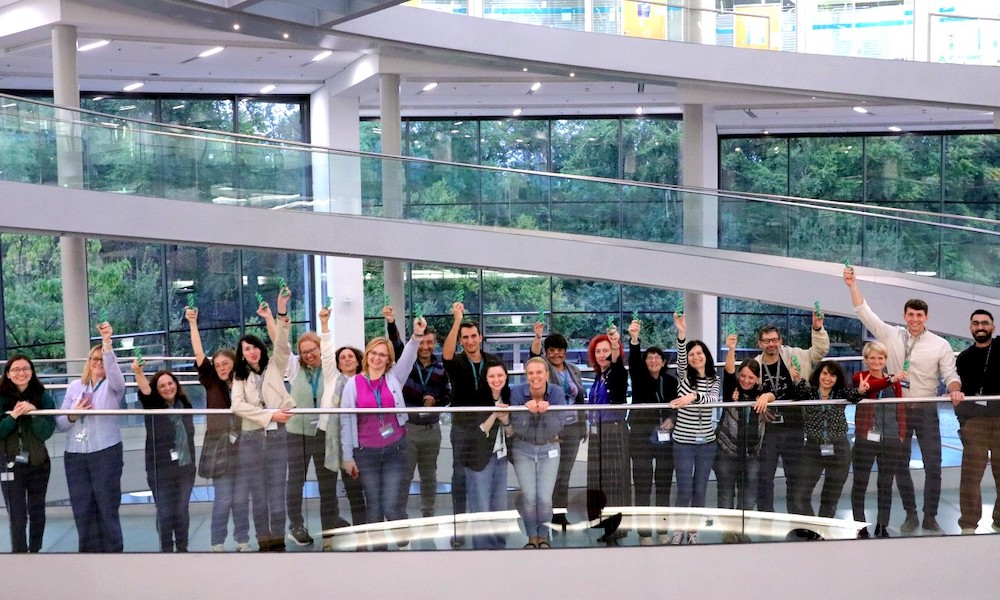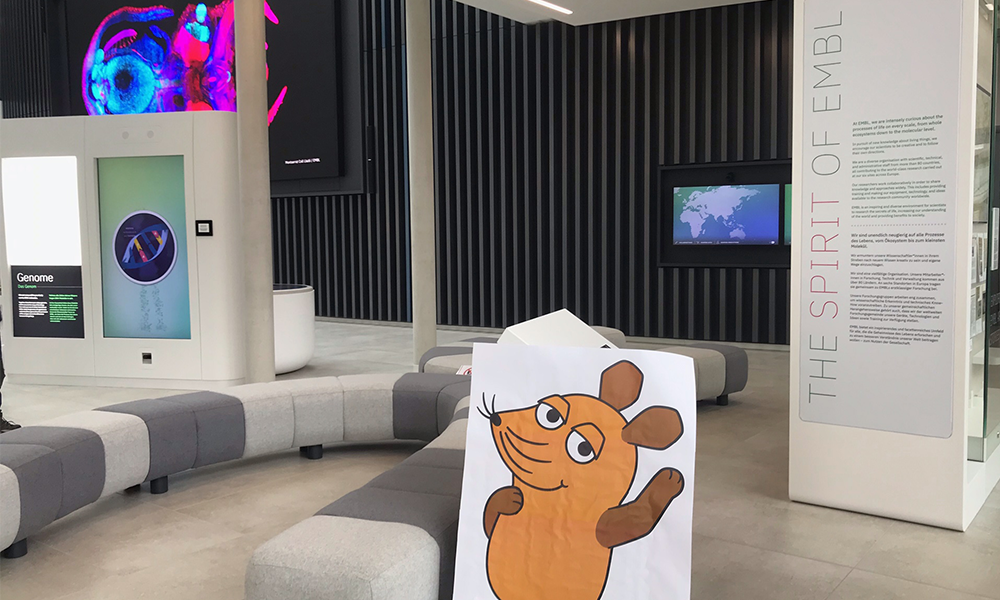
Entries flood in for Unfold Your World protein art project!

From crochet cats to vampire bats, more than 150 artworks were submitted to EMBL’s protein art project Unfold Your World, displaying remarkable creativity and imagination. Young people from across Europe joined in, with entries from Germany, Greece, the UK, Lithuania, Italy, Croatia, Bulgaria, Serbia and Hungary. The artists used sculpture, collage, AI, textiles, video, and music, alongside more traditional media such as paint and charcoal, to share their way of seeing a particular protein and its function. Artworks touch on subjects including the molecular biology behind grief and depression, controversies around badgers and TB in the UK, and the proteins involved in cat allergies. Following the deadline on 18th October, judges will now pick a winning entry from each eligible EMBL member state, across two age categories (14-15 and 16-18).
Winners will be notified in mid-November, and an online gallery displaying the artwork is set to launch on December 10th. Selected pieces will also be displayed at the EMBL headquarters in Heidelberg, Germany. All young people who submitted an artwork will be invited to a private view event in December to showcase their work.
The project was developed as part of EMBL’s 50th celebrations. Its aim was to ignite excitement about proteins – both the beauty of protein structures, and the huge range of functions they perform in the body and nature. Yoana, from Bulgaria, who submitted an artwork inspired by the keratin protein in the 16-18 category, says: “I learnt that proteins are vital for all living organisms and they are one of the most abundant molecules in the cell. There is a close connection between their structure and their function. Art is a great way to introduce the beauty of nature at molecular level.“



